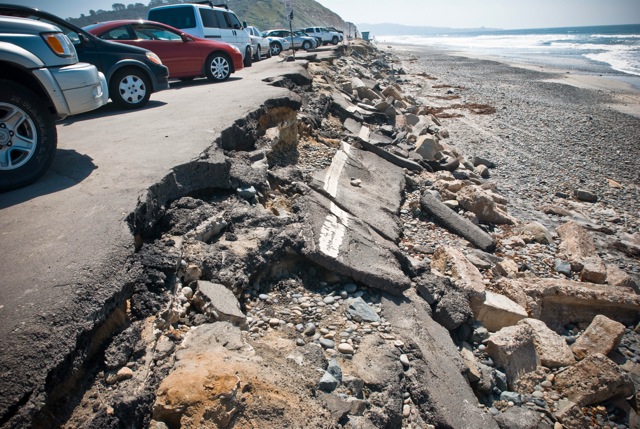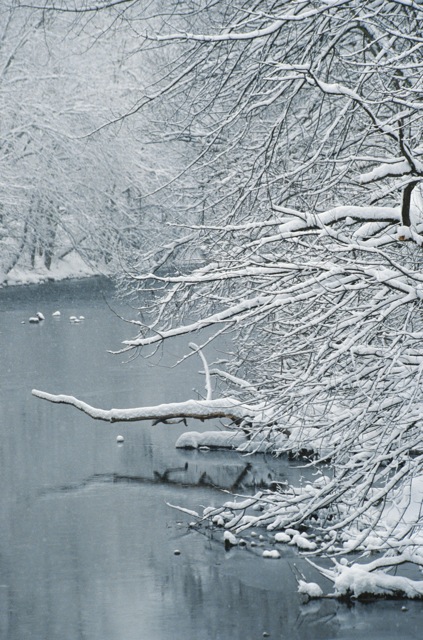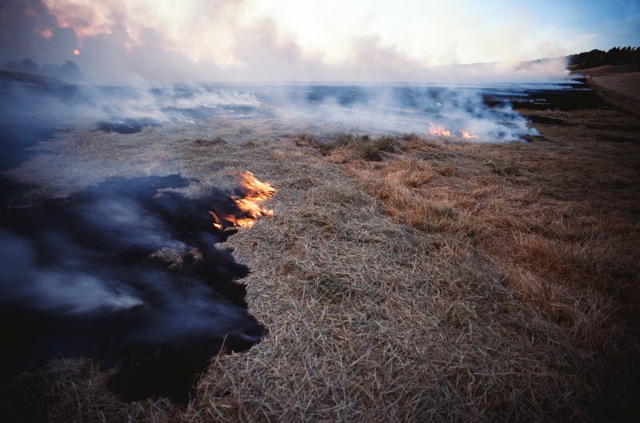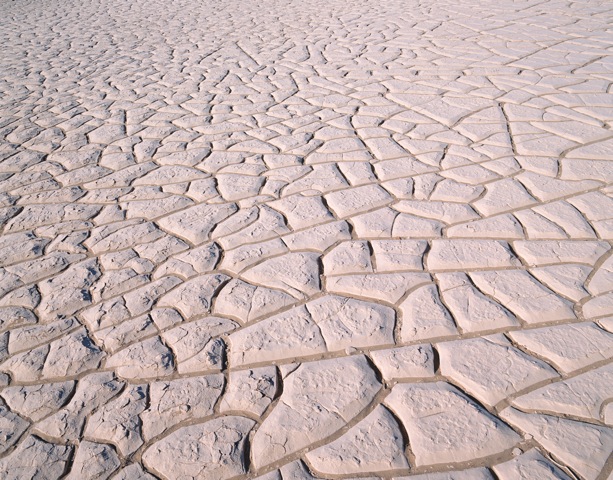By:
- Robert Monroe
Published Date
By:
- Robert Monroe
Share This:
Floods, Drought, Heat Waves: Climate Change Gives State Legislators Something to Plan For
Scripps Institution of Oceanography hosts workshop on latest research on California’s extreme weather future

The lineup of presentations at an extreme weather workshop taking place today at Scripps Institution of Oceanography sounds like an overview of biblical plagues, but in fact the event’s conveners said California needs to expect more episodes of what insurers would consider “acts of God.”
Scientists will portray California’s climate future during “Vulnerability and Adaptation to Extreme Events in California in the Context of a Changing Climate: New Scientific Findings,” and much of what they have to say is expected to be sobering. New research shows that coming decades will see a greater likelihood of intense flood events, spread of mosquito-borne diseases, longer and stronger heat waves and a drop in the amount of snow falling in the Sierra Nevada, which serves as a natural storehouse of drinking water for millions of Californians. Add to those problems increasing wildfires, coastal erosion and flooding caused by sea-level rise and damage to the state’s agriculture, and the challenge to state policy-makers becomes even more apparent.
“In California, we are vulnerable to hazards that occur during certain types of weather patterns,” said Scripps climate researcher and workshop organizer Dan Cayan. “The findings discussed here underscore that the added stress of climate change will not only alter average conditions, but in several instances may ‘load the dice’ toward more frequent or more intense extreme events. Investigating possible scenarios of climate and extremes, broadly within and across vital sectors is crucial to adapt to these potential impacts.”

Gov. Edmund G. “Jerry” Brown requested the meeting of some of the country’s leading climate researchers ahead of his own gathering of state legislators Thursday. The governor’s event, to be held in San Francisco, is meant to guide contingency plans for disaster response. It could also set a priority list for upgrades to the state’s water and power delivery infrastructure. The Scripps workshop is a public event and presentations are tailored for a lay audience.
“We hope that the workshop will foster the growing partnership between scientists and decision-makers, including Gov. Brown’s administration,” said Cayan, “and will heighten the resolve of the public to reduce the impacts of severe weather and environmental conditions that are driven by climate variability and climate change.”
Cayan is not leading a discussion at the workshop, but his own research suggests that the Sierra Nevada will face a far greater chance of experiencing years where California’s snowpack will be diminished to a fraction of historical averages. He uses historical observations and computer simulations to study scenarios of future climate and weather events as do many climate scientists.
Tony Westerling, a UC Merced researcher who received his doctoral degree at Scripps, also uses models to assess wildfire risk in California and the rest of the western United States. He said that a perception lingers among some Americans that climate change science remains unsettled, but in fact the opposite is true. The future is more predictable than ever before, he said, and scientists are better now at evaluating remaining uncertainties.

“The important thing is, we aren't trying to model just one particular future,” he said. “We are trying to understand a very broad range of possible futures, so that we can see where outcomes are very certain, work on reducing critical uncertainties, and help people make smart choices for the future.”
Researchers noted that if there is a bright spot to the dire news about California’s climate future, it’s that the state is already advanced in terms of understanding climate change compared to other states and even other countries. Just as California has set a national standard for greenhouse gas emissions, the state has also made an investment in improving its predictive capabilities and in encouraging dialogue between scientists and users of scientific information.
Marty Ralph, a climate researcher at NOAA and a workshop participant, noted the advances that scientists have made in understanding the nature of California’s winter storms. In particular, they have identified so-called “atmospheric rivers,” channels of water vapor-bearing clouds that often deliver the majority of California’s precipitation in short-duration intense storms. Ralph noted that a recent measurement of water vapor transported in one atmospheric river showed that the storm track contained an amount of water equivalent to 17 Mississippi Rivers.

“These storms are now better understood,” said Ralph. “There are prospects for several days’ lead time to know when these events are going to hit California.”
Two participants – Susanne Moser of Stanford University and Max Auffhammer of UC Berkeley – will give state legislators a summary of the workshop on Thursday. Ralph said he hopes the attention paid to extreme weather in the two events translates to California’s increased support for innovations that could help it become even better prepared.
“As the scientific understanding of the conditions that cause extreme weather events improves, there is potential for major advances in their predictions,” Ralph said. “Such advances in understanding and prediction, at least in the case of fresh water, could lead to new tools and methods for flood control and water management that would provide resilience to some of the impacts of climate change on water in California, and more broadly across the western United States.”
Share This:
You May Also Like
Engineers Take a Closer Look at How a Plant Virus Primes the Immune System to Fight Cancer
Technology & EngineeringStay in the Know
Keep up with all the latest from UC San Diego. Subscribe to the newsletter today.



